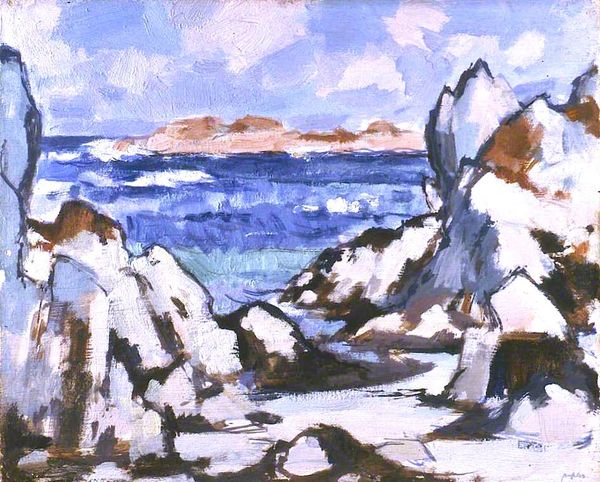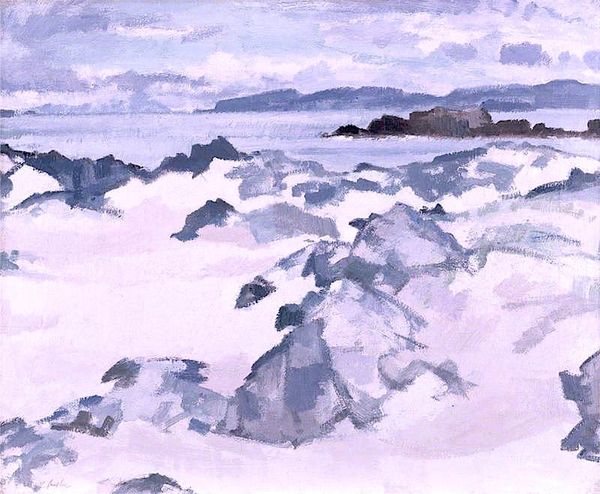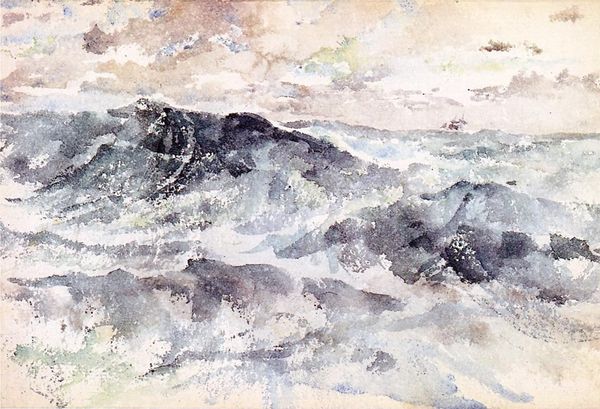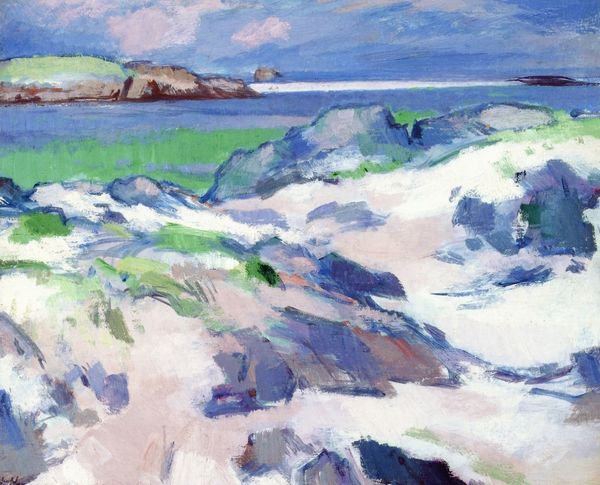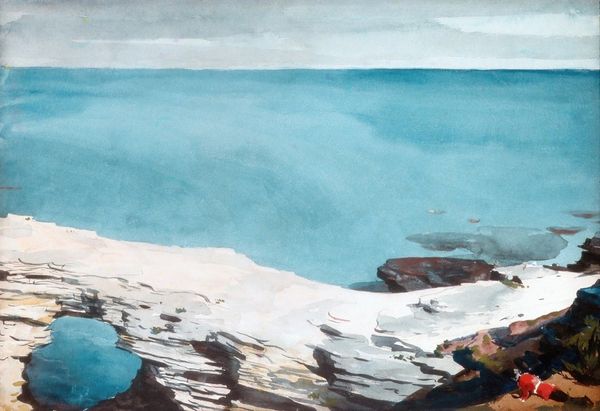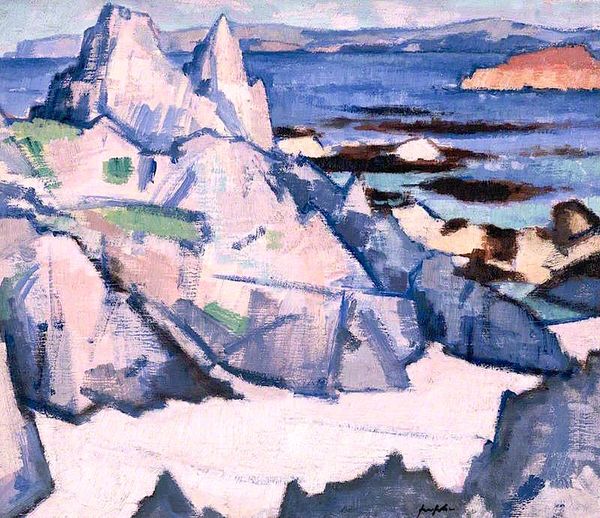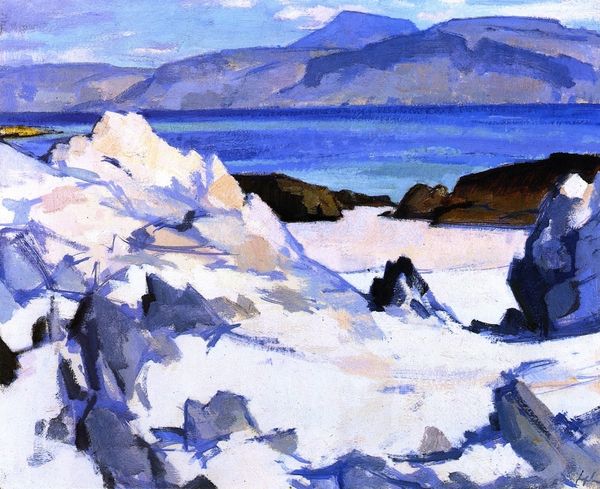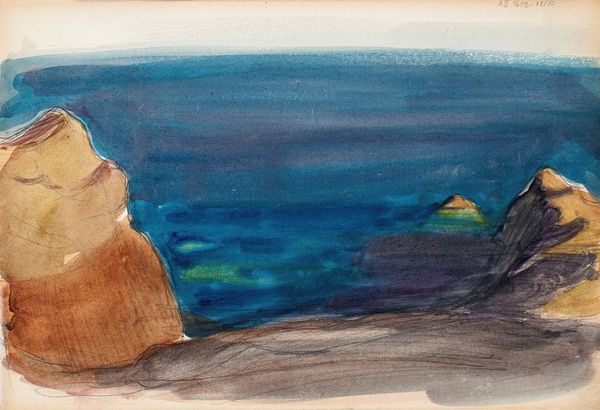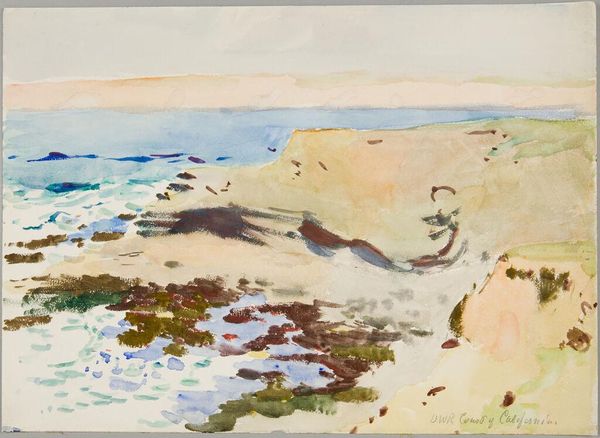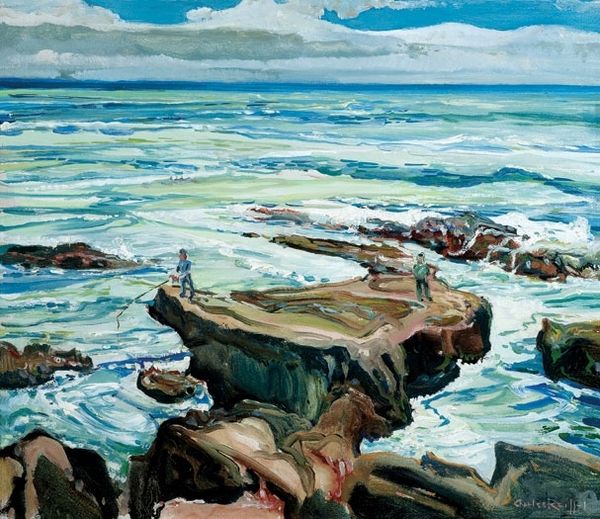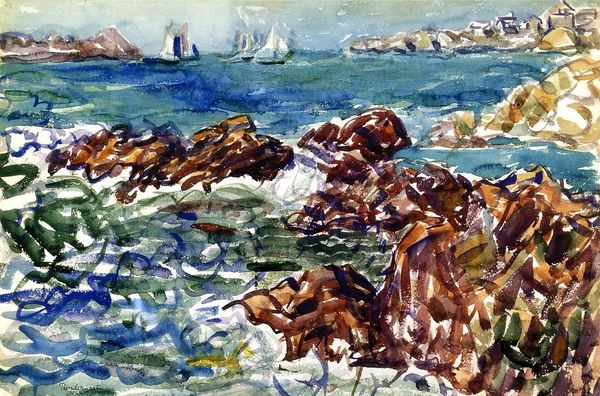
Copyright: Public domain
Editor: This is "Iona," a 1923 oil painting by Samuel Peploe. There’s a real stillness to this landscape, despite the broken brushstrokes. What social currents might have influenced Peploe’s rendering of this remote Scottish island? Curator: That stillness, as you call it, is deceptive. Look closer. Iona wasn't just a pretty view; it was, and remains, a site steeped in history and spirituality, deeply connected to Scottish and Celtic identity. Consider the early 20th century: Scotland was grappling with questions of national identity amidst the decline of the British Empire. Could Peploe’s choice to depict Iona be interpreted as a conscious act of claiming a visual space for Scottish culture, perhaps even subtly resisting dominant English narratives? Editor: I hadn't considered it as a statement of identity. So, the seemingly peaceful landscape might be concealing something more profound? Curator: Precisely. And think about the rise of Modernism at the time. Artists were moving away from purely representational art, exploring subjective experiences. How might Peploe's use of bold color and flattened perspective be interpreted as a way of expressing a personal connection to the land, one that transcends mere picturesque scenery? It almost borders on abstraction, right? Editor: Yes, especially with those simplified forms of the rocks and water. So he is perhaps presenting his *own* view? Curator: Exactly! And the intense colors... Could those be expressing something about the emotional or spiritual significance he finds there, something that resonates with the history of the island? In a way, he's staking a claim – artistically and culturally. The act of "plein air" painting becomes performative. What are your thoughts on this approach? Editor: That's a really compelling point. I will now always see more than pretty blues and whites. Curator: It enriches how we all see the work!
Comments
No comments
Be the first to comment and join the conversation on the ultimate creative platform.
